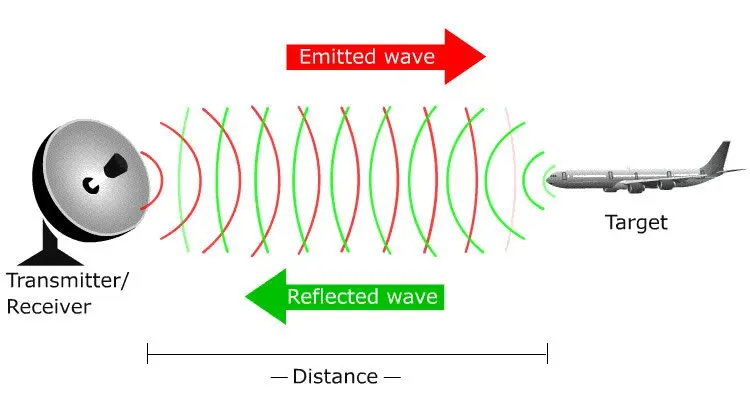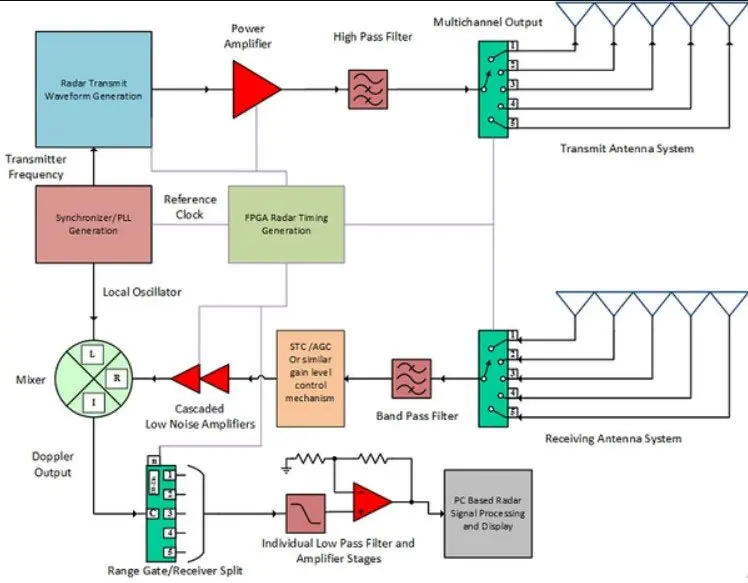Table of Contents
Introduction of How Radar Detectors Work
Radar detectors as we all know are receivers that help detect the transmission of radio waves. So, first things first, radar is basically an acronym for RAdio Detection And Ranging. Such a system functions to identify the position of objects, render precise maps and also track aircraft/ marine navigation systems.
Not just these, frequencies that are identifiable can also pertain to radio, vehicles, television, or mobile phones. On a larger scale, huge-sized antennas with high power have traditionally been used to measure the distance between planets along with the movement of artificial satellites and to produce topographical maps.
But, what is its use for the general public? Radar technology is deployed by law enforcement authorities to take note of speeding vehicles, in fact, to determine the radial speed vector.
The most popular radars are used in the military. However, there also are radar systems useful for non-military applications. These can easily recognize a certain type of pulse at a single frequency.
Important Information About Radar Detectors
Radar Technology:
A radar is a band of sound waves or frequencies that are transmitted as well as received by a single unit. These waves travel similarly to the speed of light. They pass through in a straight line but can at times even bounce off when struck with a denser object.
Talking about radar detectors used for police speed cameras, vehicles on the road spring back the frequencies when struck in between. This radio frequency is very similar to those in AM as well as FM receivers. However, instead of playing music, detectors work to beep and alert the user about the presence of an electromagnetic spectrum.
Radar Detection:
Since it is about radio waves, authorized authorities are involved in making detention legal. It allows for the regulation of interstate communication for television, radio, and more. Areas like California or Virginia prohibit usage. Jamming however is legal for governmental purposes and not otherwise.
Radar Detectors:
The majority of people own radar detectors in their vehicles. These detectors help speed enforcement agencies to accurately create a record.
They can start from as low as $100 and go up to as high as $700 and more. These really are a worthy investment since the device substantially helps with the mitigation of any associated risks.
What Else about How Radar Detectors Work?
Just like other equipment, radar detectors are specially designed devices that help identify the presence of radar, especially for cars that are speeding (non-military models). More advanced technologies like laser speed guns help avoid speed traps which even the best radar detectors may not pick up.
The radar device produces a radio wave moving at the speed of light and bounces back to the device after colliding with objects that hinder the path. Based on the time a radio wave takes to strike and bounce off an object, it’s easy to figure out the accurate distance.
When it comes to the detection of speed, the frequency that returns is altered by a car that’s moving toward the detector. This signal has a shorter distance which in turn increases the frequency to essentially determine the speed of a particular vehicle. The equipment used by police casts a wider variety of radio waves but tracks specific targets.
Having said that, there are a hundred types of radiation that a detector must be sensitive to! But, the x-band devices are low-frequency high-output, and able to detect signals 2-4 miles away. However, HK-band devices employed by police officials have a smaller wavelength i.e. only 0.5 to 2 miles away.

How Radar Detectors Work? An In-Depth View!
The manufacturers can be fairly choosy as to which signal the device must match to subsequently set off the alarm. They operate across a variety of frequency bands which are highly effective. So, to simplify the information here’s everything about the working of a radar detection system:

(Image for representational purposes. This is not an exact image.)
Generating The Signals:
First, modern systems make use of Phase Locked Loop Frequency Synthesizers that help in signal generation.
Generating The Waveform:
The next step is when the signals are deployed as carriers. Therefore, modulators come into action since finding the needed range in a standard configuration can be difficult. So, the different types of modulators are:
Frequency Modulation:
These are produced by intensifying the VCP tuning voltage
Pulse Train:
These are produced by pulsing the signal source
Pulse Compression:
A.K.A. barker codes, these are advanced waveforms
Amplification:
Amplification of the radio waves happens with the help of Travelling Wave Tubes or Gallium Nitrite amplifiers. Automatic Gain Control (AGC) circuits help retain a steady output. These couple-up tiny radio signals are emitted from the amplifier to convert into corresponding voltage after which a comparison is made with a predetermined signal.
Deviation or any kind of obstruction, small or large, leads to an error signal. This is employed to drive the voltage amplifier to later transmit the same through an antenna both single and multi-element.
Receiving Signals:
Using the Ferromagnetic material-based Circulator, transmission, as well as reception, are both possible from the same port. RX gain chain signals are amplified as opposed to the TX gain chain that requires low power amps a.k.a. Low Noise Amplifiers (LNA).
IF (Intermediate Frequency) Stage:
The transmitter TX signal is present as a Stable Local Oscillator and is left as a Doppler shift signal after mixing with the receiving signal. This later goes through Signal Processing circuits to provide better information about the range, acceleration, and velocity.
This was just the gist!
There are a whole lot of books written on the functioning of radar technology. Plus, it’s not that easy to get into the depths of how exactly it works and what are the other types. However, you can always refer to the vast pool of knowledge and know-how radar technology works.

